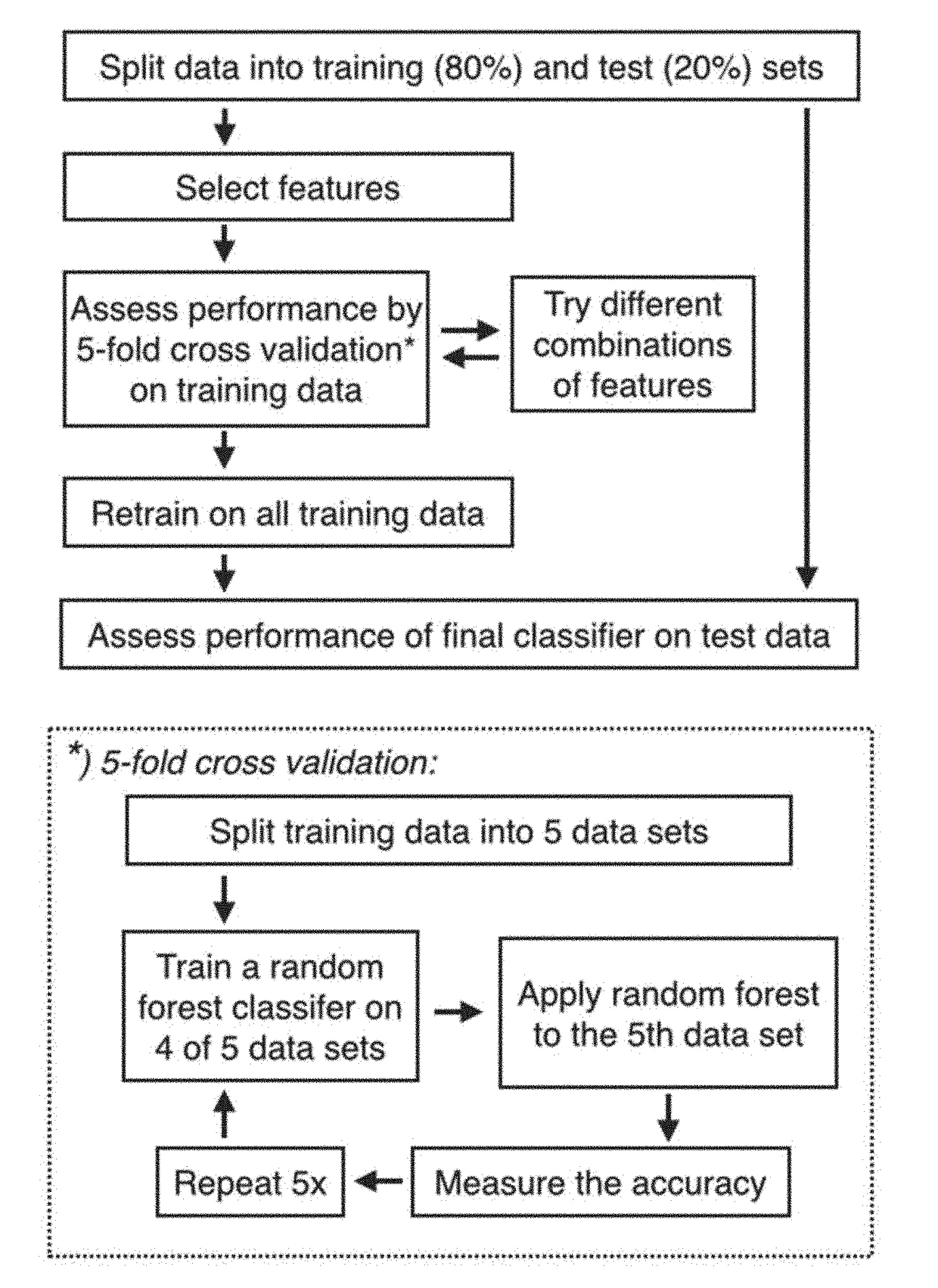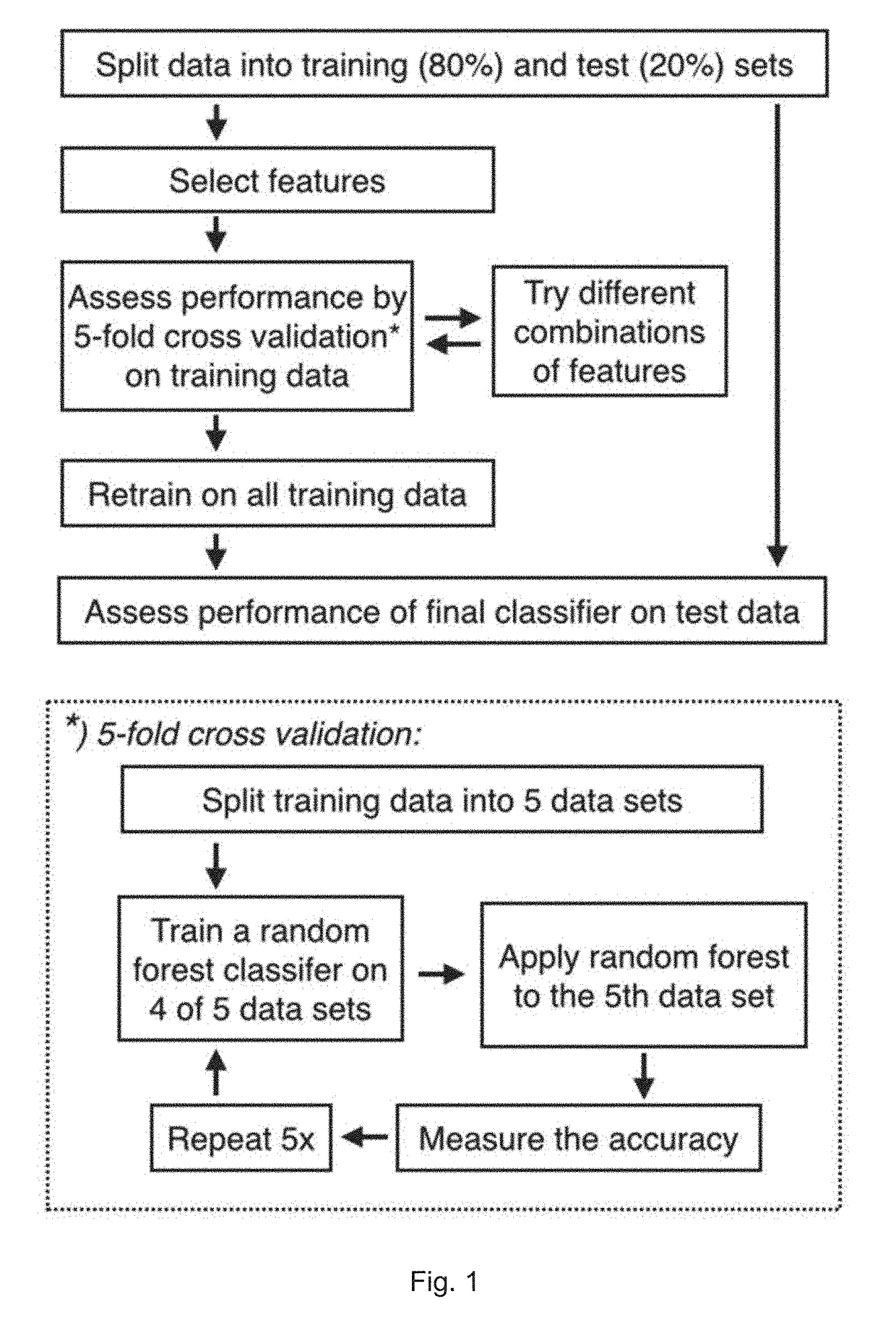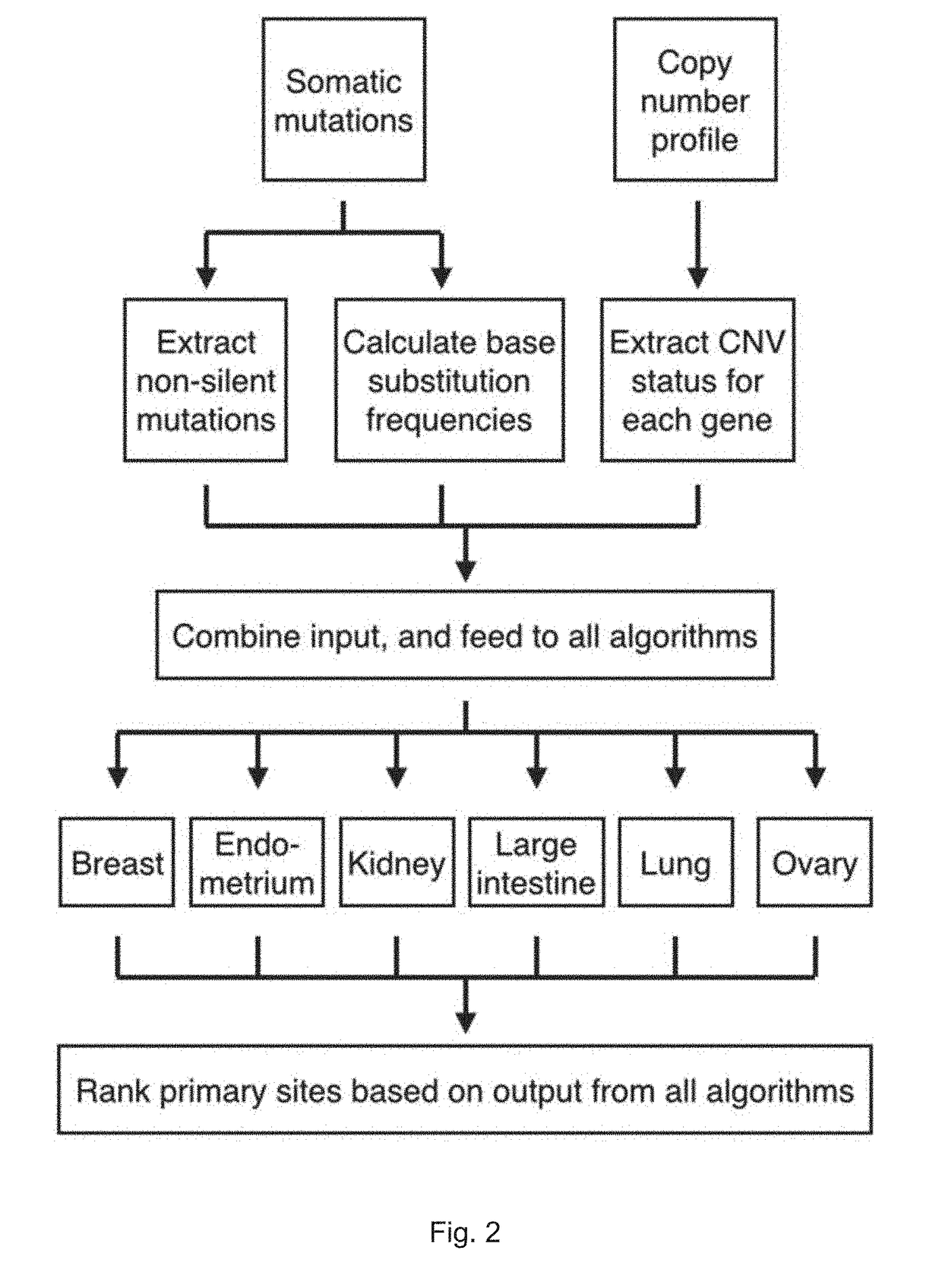Method for identification of tissue or organ localization of a tumour
a tissue or organ localization and tumour technology, applied in the field of primary tumour localization prediction, can solve the problems of many time-consuming and costly clinical tests, inability to locate primary tumours (tissues wherein cancer has started), and the input data used in this method is restricted, so as to improve accuracy
- Summary
- Abstract
- Description
- Claims
- Application Information
AI Technical Summary
Benefits of technology
Problems solved by technology
Method used
Image
Examples
example 1
[0201]The present example describes the development and testing of prediction methods as described herein.
Data
[0202]We used the publically available COSMIC Whole Genomes database to identify tumour specimens with genome-wide or exome-wide somatic mutation data, and focused on solid non-central nervous system (non-CNS) tumours of the ten primary cancer tissue sites for which at least 200 unique specimens were available (Table 3).
TABLE 3Total number of samples with mutation data representing eachcancer tissue type, and the number that also has CNV data,including those in the training set and those in the testing setNumber of sampleswith data for:Table 3PointCopy numberPrimary sitemutationsvariationsBreast936850Endometrium281246Kidney468300Large Intestine592486Liver415—Lung807476Ovary497462Pancreas311—Prostate372—Skin296—Total49752820
[0203]Somatic mutation data from the COSMIC database version 68 by Bamford et al. was downloaded at Feb. 8, 2014 (ftp: / / ftp.sanger.ac.uk / pub / CGP / cosmicid...
PUM
| Property | Measurement | Unit |
|---|---|---|
| frequency | aaaaa | aaaaa |
| imaging | aaaaa | aaaaa |
| single base substitution frequency | aaaaa | aaaaa |
Abstract
Description
Claims
Application Information
 Login to View More
Login to View More - R&D
- Intellectual Property
- Life Sciences
- Materials
- Tech Scout
- Unparalleled Data Quality
- Higher Quality Content
- 60% Fewer Hallucinations
Browse by: Latest US Patents, China's latest patents, Technical Efficacy Thesaurus, Application Domain, Technology Topic, Popular Technical Reports.
© 2025 PatSnap. All rights reserved.Legal|Privacy policy|Modern Slavery Act Transparency Statement|Sitemap|About US| Contact US: help@patsnap.com



